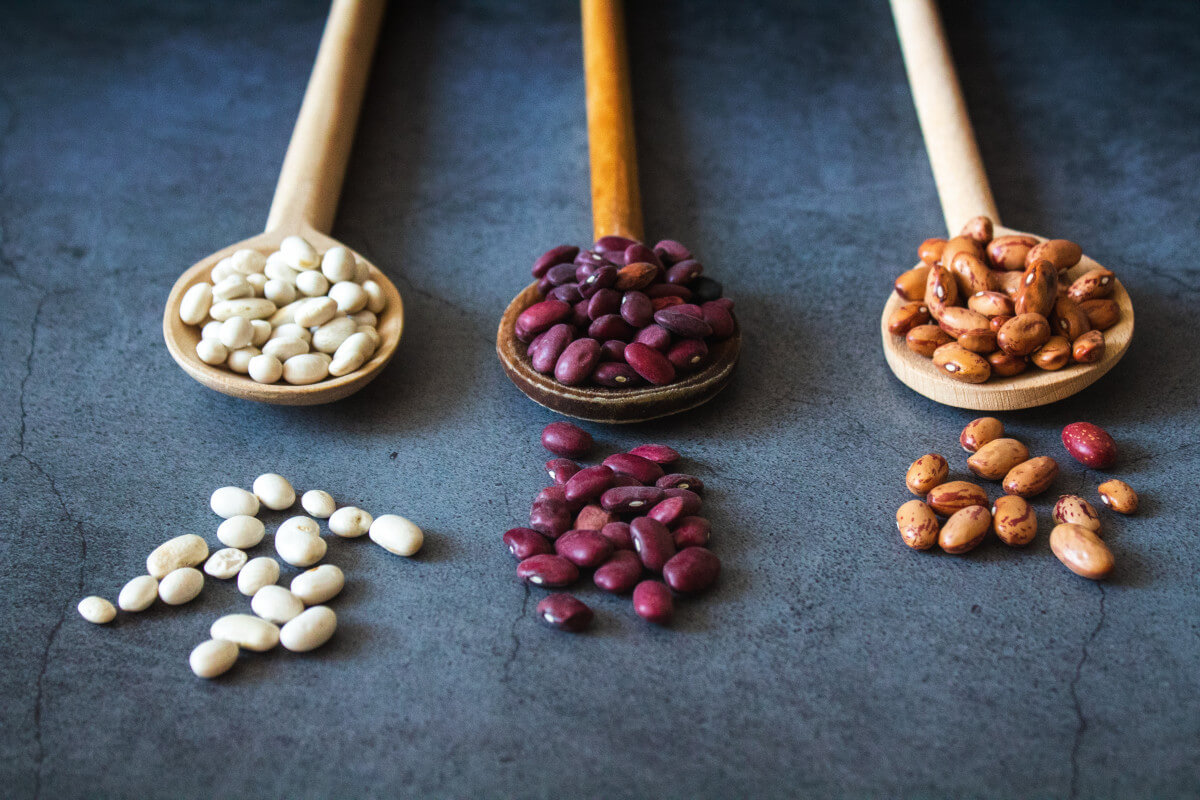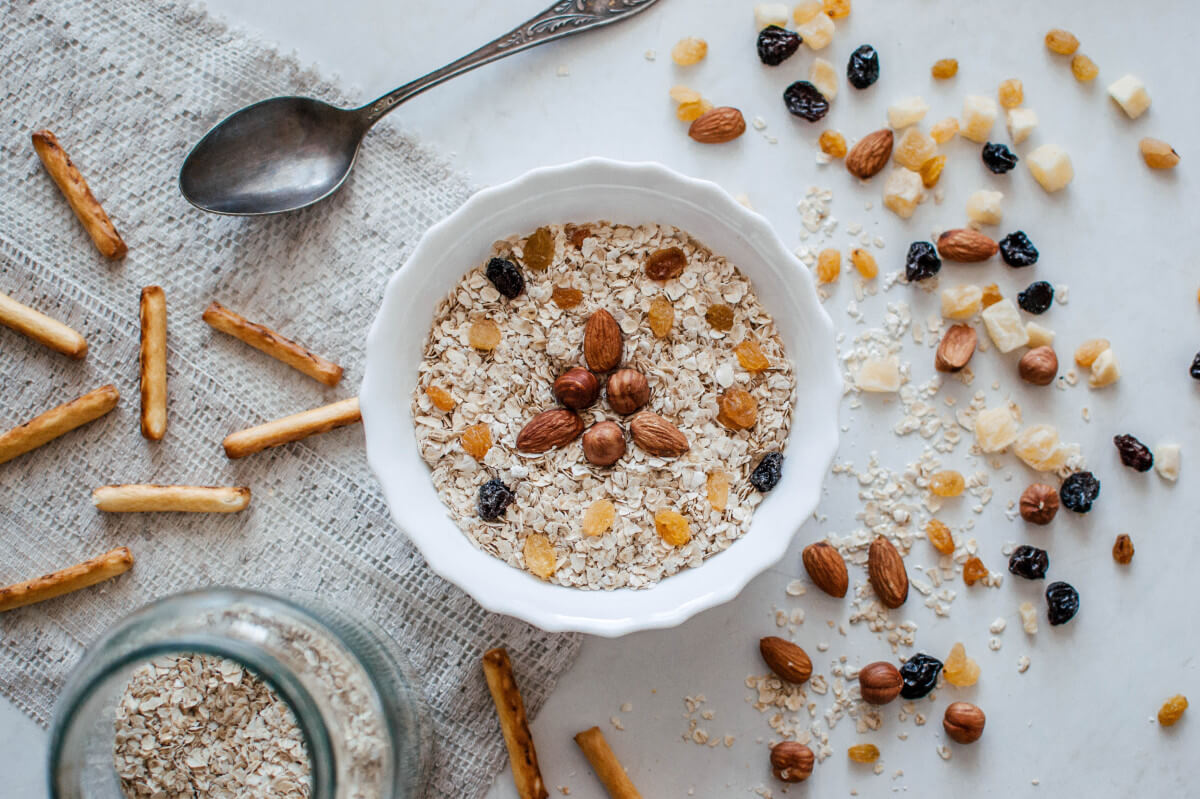Ask A Practitioner: How Much Fiber Should I Eat?
When we think of fiber, we often think of brown, inedible sticks with the taste and consistency of cardboard. Fiber doesn’t inspire many smiles or sounds of delight the way cream might, for example, with its unctuous creaminess and delightful sweetness. But fiber isn’t just dried grain husks you have to mix into a glass of water and choke down every night.
Fiber provides many benefits to our daily lives and our health, and when eaten in its original container (e.g., plants), it's delicious, too! We’ll get into what fiber is, why it’s important, and how to get more of it into your diet—but suffice it to say fiber plays roles in regulating blood sugar, slowing down digestion, keeping you full longer, and of course, regulating bowel movements.
- What is Fiber?
- Why is Fiber Important?
- How Much Fiber Should I Eat Everyday?
- What Are the Best Sources of Fiber?
- Are There Fiber Supplements?
- How do I Get More Fiber in My Diet?
What is Fiber?
Fiber is the structural part of plants, a carbohydrate that does not get broken down into sugars for the body to use as energy. Think the skin and flesh of a squash or leaf of collard greens. It is the part of the plant that our bodies cannot digest and absorb, unlike the minerals and other nutrients our bodies get from the plants we eat. There are two types of fiber, which play significant roles in our digestion and overall health.
Soluble fiber
This type of fiber dissolves in water or is “soluble.” Soluble fiber turns into a sort of gel in the large intestine and slows down the movement of food through your digestive tract. This fiber comes from the soft, squishy bits of fruits, vegetables, and grains—think beans and the insides of most fruits like bananas or apples. Soluble fiber is thought to be important for lowering blood sugar levels.
Insoluble fiber
This type of fiber does not dissolve in water or is “insoluble.” Insoluble fiber does not break down or digest as it makes its way through your digestive system until finally it reaches your small intestine and can feed the host of bacteria in your gut. That’s a good thing! Those bacteria play key roles in so many of your body’s processes and systems, you want to keep them healthy. Insoluble fiber comes from the crunchy, chewy, fibrous parts of the plant. Think leafy greens, root veggies like carrots, and the skins of most fruits and vegetables.

Why is Fiber Important?
We’ve been told for years how important fiber is for proper digestion and proper bowel movements. Insoluble fiber, in particular, holds on to water and adds bulk to our stool, making it softer and easier to pass. But increasing fiber in our diets is associated with a number of other benefits, including appetite control, lower cholesterol, and better blood sugar regulation.
Because fiber tends to slow down digestion and the passage of food through the digestive tract, it can keep you feeling full longer. Eating a meal high in fiber and protein is a great combo for packing in many great nutrients into a smaller package that keeps you full for hours. When you feel full for a longer period of time, you may not feel the impulse to snack between meals; snack foods often being less nutrient-dense and packed with ingredients like rancid vegetable oils and sugar.
As mentioned above, soluble fiber may help support blood sugar regulation by slowing the absorption of sugars by the body. Blood sugar can be thrown out of whack by poor sleep, high stress levels, and of course, a diet high in sugary foods. Working on dialing in your sleep, stress, diet, and lifestyle with a Curated practitioner can help you identify ways to support your blood sugar regulation.
Fiber is also incredibly important for feeding our gut’s microbiome, or the colony of beneficial bacteria living in our large intestine. After insoluble fiber makes its way all the way through our digestive system, the bacteria in our guts feed on this fiber and produce some helpful things our bodies use every day, including the hormone serotonin. This is a brand new field of study, but we are discovering that our gut microbiome plays a huge part in everything from our metabolism to immunity and even mental health!
How Much Fiber Should I Eat Every Day?
There is little agreement on how much fiber you should eat every day, but we know that most Americans don’t eat nearly enough.
The recommendations for total fiber intake range from 30 to 38 grams for men and 20 to 25 grams for women. The recommendation for soluble fiber is about ¼ of total fiber intake, so about 9.5 grams of soluble fiber for a man and 6.25 grams of soluble fiber for women.
On average, most Americans eat only 15 grams of fiber per day! We all probably have room for improvement, but there are some easy (and delicious!) ways to get more fiber into our diets.
What Are the Best Sources of Fiber?
Adding fiber to your diet does not have to mean eating indigestible cardboard-like things. Some of the best high-fiber foods are foods you probably already like eating anyway.
Some of the foods highest in soluble fiber (the kind that dissolves) are beans and other legumes, but also fruit favorites like apples, apricots, and pears. In fact, black beans are packed with 5.4 grams of soluble fiber per ¾ cup! Not everyone tolerates legumes well, as they can cause gas and bloating, but cooking beans with kombu (a dried seaweed) can help neutralize the sugars that produce gas.
Insoluble fiber (the kind that does not dissolve) is found in the tough, chewier parts of the plant. Whole grains like brown rice and amaranth, root vegetables like carrots and sweet potatoes, and dark leafy greens like collards or mustard greens have significant amounts of insoluble fiber. Remember, eating insoluble fiber softens and bulks up your stool, making it easier to pass. Getting more foods high in insoluble fiber can be as easy as roasting carrots or potatoes, braising greens with garlic, or boiling a batch of amaranth or another whole grain.
Are There Fiber Supplements?
Fiber supplements are inexpensive and easy to add to your diet. The most common, psyllium husk fiber, can be added to baked goods like muffins or bread. Psyllium husk generally contains 70% soluble and 30% insoluble fiber, so it can be helpful both for blood sugar regulation as well as helping to ease bowel movements. There are many ways to take psyllium husk, but we recommend a powder like NOW Psyllium Husk Powder
Acacia fiber like the Protocol for Life Balance Acacia Fiber Powder is primarily a soluble fiber, so it can help with blood sugar regulation and appetite control. We like acacia fiber because it is mostly tasteless, so it is perfect for adding additional fiber to smoothies or yogurt bowls.
Depending on your goals - whether you are looking for help with constipation or appetite and blood sugar regulation, fiber can be a big help in supporting those goals. If, for some reason you are unable to get adequate fiber into your diet through whole foods, supplements can be a big help.
How Do I Get More Fiber In My Diet?
The great thing about fiber is that it comes packaged (both soluble and insoluble) in plants! Eating a balanced, whole foods diet with plenty of root vegetables, leafy greens, legumes, and crunchy veggies like broccoli will help ensure you’re getting enough fiber for your needs. The options for preparing and enjoying these fruits and veggies are almost limitless, so we recommend grabbing a cookbook or searching for ideas online to add more variety to what you are already eating.
If you’re not quite there yet and still need to take baby steps to get more fiber into your diet, supplementation can help bridge that gap. If you need support getting started, a Curated Wellness practitioner will be happy to help you set small, achievable goals to get your diet, sleep, and stress dialed in.
 About the Author:
About the Author:

Joel is a Nutritional Therapy Practitioner and began his health journey when he decided to quit cigarettes for good. By finding the motivation to make lifestyle changes in diet, exercise, stress, and sleep, he feels healthier in his 40’s than in his 20’s and wants to make sure he will be around for a long time. Once he saw results in himself, Joel wanted to use his passion for wellness to help other people. Joel has a private practice in Northern California where he helps clients achieve better energy, focus, and connection to their bodies through bio-individual diet and lifestyle changes. Learn more about Joel.
The information presented on this website is intended for educational purposes only. Statements within this site have not been evaluated or approved by the Food and Drug Administration. This content is not intended to diagnose, treat, cure, or prevent any specific condition or disease, nor is it medical advice and should not be considered a substitute for professional medical expertise. Readers of this content are advised to consult their doctors or qualified health professionals regarding specific health conditions or concerns. One should always consult a qualified medical professional before engaging in any dietary and/or lifestyle change or new health program. Curated Wellness does not take responsibility for any health consequences of any person or persons following the information in this educational content.









